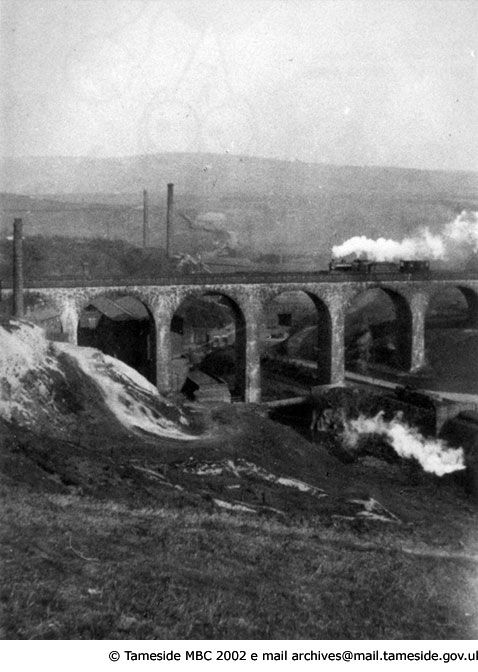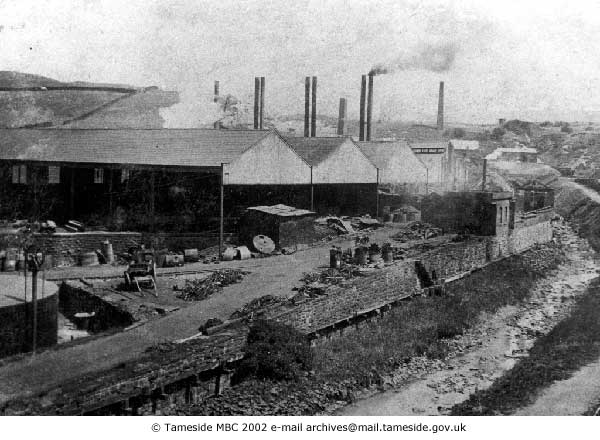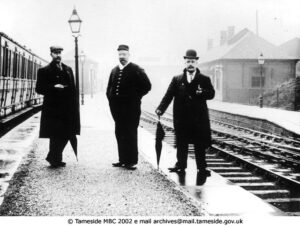The Age of Steam in Ashton-under-Lyne

The age of steam in Ashton did not just begin with the arrival of the railways in the Northwest of England. The first railways to pass through the town arrived in the early 1840s, but the age of steam in Ashton arrived a century sooner. With the commissioning of a Newcomen Engine to pump out the water from Fairbottom Colliery built between 1730 and 1750, drawing water 61 metres; to prevent the mine from flooding.
The Newcomen Engine named Fairbottom Bobs could be found, close to Park Bridge in Ashton under Lyne was purchased in 1927 by Henry Ford of the Ford Motor Company and is still in operation at The Henry Ford Museum, Michigan in the United States. Sadly, a piece of our history that heralded the age of steam in Ashton, was lost to the community. Although looking at how we still treat history in the local area; it may have saved the Newcomen Engine from oblivion.
The Age of Steam In Ashton Brings Tragedy
 The industrial age also brought tragedy to the area in February 1858 when firedamp in the nearby Bardsley Colliery caused an explosion which resulted in the deaths of 53 men, a preventable disaster as the mine had been inspected months earlier in October 1857 and was found to be unsafe. The age of steam in Ashton brought pain and misery to the miners’ families and the mine owners suffered heavy financial losses due to the explosion. They were only fined £5 for their failure to ensure the safety of the mine itself and it does appear that the colliery re-opened before 1860.
The industrial age also brought tragedy to the area in February 1858 when firedamp in the nearby Bardsley Colliery caused an explosion which resulted in the deaths of 53 men, a preventable disaster as the mine had been inspected months earlier in October 1857 and was found to be unsafe. The age of steam in Ashton brought pain and misery to the miners’ families and the mine owners suffered heavy financial losses due to the explosion. They were only fined £5 for their failure to ensure the safety of the mine itself and it does appear that the colliery re-opened before 1860.
The age of steam though continued to grow the community here in Ashton under Lyne. Over 10,000 people were employed in the town before the cotton famine. By 1800, local weaving sheds began to be steam-powered, and businesses moved away from locations close to water courses. Until the age of steam, many mills locally were water-driven, and if you look carefully many rivers and streams in the area still bear evidence of this.
The First Steam Locomotive
The majority associate the age of steam with the steam locomotive and in 1840, the first such locomotive operated in Ashton-under-Lyne. Based at the Rocher Colliery tramway, the line being originally horse-drawn, moving coal to the Fairbottom Branch Canal. The Colliery was the terminus of this tramway, it passed through the Park Bridge Iron and Steel Works. Coal was transported from the colliery to the canal, on the return journey Pig Iron was transported from the barges to Park Bridge Iron and Steel.
What is unique about the locomotive named The Ashtonian, was the fact that it had a hinged funnel. This is due to the tunnel on the line measuring only five feet wide and six feet high. The funnel had to be lowered for the Ashtonian to pass through it, history throughout the age of steam in Ashton throws up many oddities.
The Age of Steam in Ashton, The Station’s Open
The age of steam in Ashton brought the railways, the first being Ashton Railway Station, becoming Ashton Park Parade in 1862. The station was once part of the Sheffield, Ashton-under-Lyne, and Manchester Railway (SA&MR), opening on 23rd December 1845. It was pre-dated by a Station that in reality is in Audenshaw originally named the Ashton and Hooley Hill Station when it opened on 11th November 1841, it became Guide Bridge Railway Station in 1845.
The second railway station to open in Ashton-under-Lyne was originally part of the Ashton, Stalybridge, and Liverpool Junction Railway (AS&LJR). The line opened in 1846 connecting the two booming towns of Ashton under Lyne and Stalybridge with the Port of Liverpool. By 1847 it had already amalgamated with the Manchester to Leeds Railway, later becoming the Lancashire and Yorkshire Railway (LYR). The station was originally named Ashton and became Ashton Charlestown in 1868, then reverting to Ashton under Lyne in 1968.
 Ashton and Oldham are Linked
Ashton and Oldham are Linked
The third station to open in Ashton under Lyne at the height of the age of steam was Ashton Oldham Road. This connected the Sheffield, Ashton under Lyne, and Manchester Railway line to Oldham Clegg Street Station; and was The Oldham, Ashton, and Guide Bridge Junction Railway (OA&GBJ). This same line did briefly have a fourth station in Ashton under Lyne, that being Ashton Moss Station, and only open for a year from 1861 to 1862. The first idea for this line was put forward for approval right back in 1847 and did not open for another thirteen years in 1860.
The line was specifically built for freight but did not carry passengers until 1958 before it finally closed ten years later. The railway lines and Ashton Oldham Road Station are long gone, as is the twelve-arch viaduct that carried the railway across Park Bridge. But for those who love a little nostalgia, the path of this forgotten relic of the age of steam in Ashton can still be walked. A walk through history leads to what was once the location of the previously mentioned Newcomen Engine, Park Bridge Iron and Steel Works; and the above-ground remains of coal mining in Ashton-under-Lyne.
History on our Doorstep
The fact is relics of the Age of Steam can be found all over the town of Ashton under Lyne if you know where to look. Take a walk down Warrington Street until you reach the bypass, and you will find The Station Hotel. This is all that is left of Ashton Park Parade Railway Station, a building that has stood now for over 170 years. Once part of a railway station complex that had a water tower and an engine house for six locomotives.
On the same street as the Station Hotel, The Temple of the Church of the Christian Israelites once stood. Its connection to the Age of Steam is the fact that one of its patrons was Hannah Lees, owner and co-founder of The Park Bridge Iron and Steel Company. Her daughter was reputedly one of the seven virgins who accompanied the leader of the Church John Wroe on a pilgrimage.
It is also written that on the girl’s return from the pilgrimage, she was pregnant, some suggested at the time that the father was John Wroe. An event that ended the influence of the church leader over the Ashton under Lyne community. From here he returned to the county of his birth, Yorkshire and continued his church. For a fuller history of John Wroe’s Church of the Christian Israelites, you can find more details on another Blog entitled “Ashton is Stranger than Fiction, The Northern Jerusalem”.
We must as always thank the Tameside Image Archive for their continued support with our blogs on Ashton-under-Lyne. It has always been our intent to shine a light on the fascinating history of our town as part of our goal to increase awareness of our Website and business. We hope that the readers of this material enjoy the experience and gain some increased knowledge of Ashton-under-Lyne and the surrounding area. Please get in touch with us, if you have any comments on this or any of our Blogs and articles.
Register For An Account
Save & manage your details, access invoices, and enjoy a quicker shopping experience!